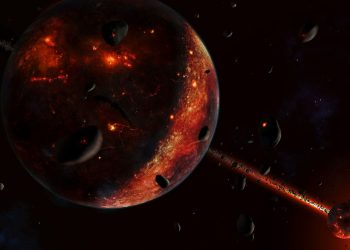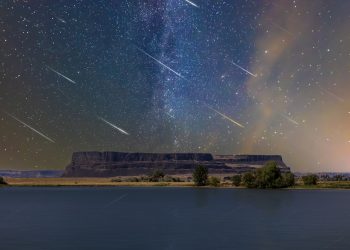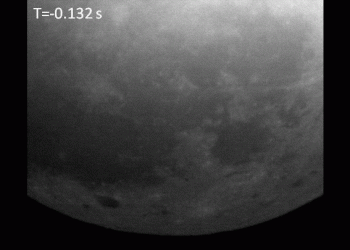Tuesday is the predicted peak for the Orionid meteor shower. The best time to look for this debris from Halley’s Comet hitting our atmosphere is after midnight.
Tuesday evening is the predicted peak for the Orionid meteor shower.
The best time to look for this debris from Halley’s Comet hitting our atmosphere is after midnight, especially in the hours before dawn. EarthSky.org states: “In 2025, the Orionid meteor shower is expected to shower its largest number of meteors on the morning of October 21. The moon will not interfere in 2025.”
The Orionids are expected to produce around 10 to 20 meteors per hour. Viewing tips are here.
You don’t need any equipment or know how to enjoy the show, just find a place to put a lounge chair or blanket to see the sky. Starting around 1 a.m. EDT in the East, the constellation that gives this meteor shower its name – Orion the Hunter – hangs above the horizon and will rise higher as the night wears on. A meteor that is part of the shower can be traced back to Orion. Sporadic meteors that are not part of the shower can also be seen during the night.
The rain should improve around dawn and the Orionids may appear anywhere in the sky. But looking straight up gives you the widest viewing area – that’s where the lounge chair or blanket comes in handy.
If you’re a city dweller, you can still see the brightest Orionids as long as you’re not looking into a street light or nestled among tall buildings. Observing the Orionids is worth it from the suburbs, provided you minimize lights and obstacles as much as possible.
The weather will be a big factor. Visit the WTOP Weather page.
The other important factor is that the moon will be absent from the sky for the Orionids, resulting in dark skies.
With this moonless sky, it’s worth looking for comet C/2025 A6 Lemmon.
Enjoy the shower and the night sky with your family, friends and/or significant other. Some foods and drinks are a plus. Make sure you have extra clothes as it can get chilly at night.
It’s up to you to clear the sky, the Orionids and the comets!
Follow Greg Redfern on his daily blog to stay up to date with the latest news in astronomy and space exploration.
Get the latest news and daily headlines delivered to your email inbox by signing up here.
© 2025 WTOP. All rights reserved. This website is not intended for users located in the European Economic Area.










